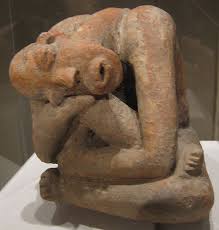Marburg virus disease: what is it, what are the symptoms and how worried should we be?














Marburg virus disease: what is it, what are the symptoms and how worried should we be?
Two people have died in Ghana from the Marburg virus, a highly infectious disease in the same family as Ebola for which no treatment yet exists.

It is the first declared outbreak of Marburg virus disease (MVD) in the country, and the the second in west Africa after Guinea confirmed a case last year.
The source for the infection in Ghana is not yet known and the World Health Organization (WHO) is warning the often fatal disease could be a serious public health threat. Here is what you need to know.
Related: Ghana reports first cases of deadly Ebola-like Marburg virus
How does the Marburg virus spread?
The virus is transmitted to people by fruit bats and can then spread from human to human via body fluids, including on contaminated clothing or surfaces, according to the WHO.
The first outbreak was recorded in 1967 in Germany after staff woking at a laboratory in the town of Marburg became infected with the disease from monkeys brought in for studies from Uganda. Outbreaks since then have mostly been detected in eastern and southern Africa.
What are the symptoms?
At its early stages, after an incubation period between two and 21 days, patients can present with headache, muscle aches, fever, and chills. The virus can then cause haemorrhaging, organ failure, weight loss, jaundice, delirium and pancreas inflammation, according to the WHO. Fatal cases usually have some form of bleeding, often from multiple parts of the body.
Given early symptoms are similar to many other tropical febrile diseases such as Ebola, malaria, and typhoid, the WHO says it can be difficult to identify.
The average fatality rate for MVD is 50%. At its lowest, the fatality rate was 24% during the first recorded outbreak in Germany. However, the fatality rate reached 88% in Angola during a 2005 outbreak, resulting in 329 deaths.
According to Prof Oyewale Tomori, the president of the Nigerian academy of science and a virology expert, there is a “great deal” we don’t yet know about MVD. This includes whether infection can be caused by contact with bat droppings in caves.
What is the treatment for the virus?
There are no approved vaccines or antiviral treatments to treat MVD, according to the WHO. However, patients have a chance of survival if specific symptoms are treated, and if supportive care is provided such as rehydration with oral or intravenous fluids.
A range of treatments are being evaluated, including blood products, immune therapies, and drug therapies.
Where has it been detected?
No cases of MVD have been detected outside Africa in the latest outbreak. The two people who died from the disease had been in Ghana’s Ashanti region, the most populated part of the country.
The cases were not found to be epidemiologically linked, nor had they had contact with animals, sick people, or attended social gatherings, the WHO said. More than 100 close contacts, including health workers and family, were identified but no one later tested positive.
What steps have been taken to contain the outbreak?
Ghana’s ministry of health is coordinating a response with aid agencies, including enhancing surveillance for the virus and epidemiological investigations. A hospital in the Ashanti region has been designated to care for any additional suspected cases.
According to the WHO, Côte d’Ivoire and Burkina Faso are also preparing for an outbreak.
Reference: The Guardian:
Monkeypox: Gay and bisexual men ‘should limit number of partners to prevent spread’ WHO warns - OLD














Monkeypox: Gay and bisexual men ‘should limit number of partners to prevent spread’ WHO warns - OLD
Gay and bisexual men should limit the number of their sexual partners to protect themselves from monkeypox and help halt the spread of the virus, the World Health Organisation has said.
Men who have sex with men are currently at the highest risk of infection, the WHO’s monkeypox expert Rosamund Lewis said on Wednesday, with at least 95 percent of patients in this category.
Director-general of the World Health Organisation Tedros Adhanom Ghebreyesus said: “For men who have sex with men, this includes for the moment, reducing your number of sexual partners, reconsidering sex with new partners, and exchanging contact details with any new partners to enable follow up if needed.
“The stigma and discrimination can be as dangerous as any virus and can fuel the outbreak. As we have seen with Covid-19 misinformation, and this information can spread rapidly online.”
More than 18,000 monkeypox cases have now been reported globaly, according to WHO data.
There have been 2,432 reported cases in the UK, with 2,367 confirmed cases and 65 “highly probable”, UKSA numbers show.

The majority of the cases have been in England and a high proportion - 73 percent - were London residents. In the UK, 99.3 percent of cases are men, with only 18 cases recorded among women.
Monkeypox is spread mainly through skin-to-skin contact during sex, the WHO have said. “If there’s no intervention in a circumstance where there’s a lot of skin-to-skin contact on a regular basis, perhaps in the context of multiple partnerships or contact with anonymous partners, then that would be a circumstance, without intervention, where the virus can spread more easily,” Ms Lewis said.
She continued: “It’s very important for anyone who has monkeypox to isolate, so that they can protect anyone else living in their household or anyone else they may be in contact with.
“Household transmission is how this was first discovered, and household transmission may in some circumstances begin to occur.”
Reference: The Independent: Holly Bancroft
Nigerian politician and wife who ‘plotted to harvest man’s kidney for their daughter’ to face trial
















Nigerian politician and wife who ‘plotted to harvest man’s kidney for their daughter’ to face trial
ANigerian politician and his wife accused of plotting to harvest a man’s kidney for their daughter are set to face trial at the Old Bailey.

Ike Ekweremadu, 60, a district senator and lawyer, and his wife Beatrice Nwanneka Ekweremadu, 55, are alleged to have transported the 21-year-old man from Nigeria to the UK.
Prosecutors claim they planned to have his kidney removed so it could be given to their daughter.
The man is said to have refused to consent to the procedure after undergoing tests at the Royal Free Hospital in Hampstead, northwest London.
The Ekweremadus allegedly treated him as a slave before he escaped and went to Staines police station in Surrey.
The couple were arrested at Heathrow Airport on 21 June after arriving on a flight from Turkey. They appeared in the dock at Westminster Magistrates’ Court over the charges on Thursday.
Ike Ekweremadu is charged with conspiracy to arrange or facilitate travel of another person with a view to exploitation, while his wife is charged with arranging or facilitating travel of another person with a view to exploitation.
The couple were not asked to enter pleas, but the court heard they have indicated they will plead not guilty.
They deny the allegations, claim that there was a criminal conspiracy, and will say no exploitation occurred, it was said.
Deputy chief magistrate Tan Ikram remanded them in custody ahead of their next appearance at the Old Bailey, for a plea and trial preparation hearing, on 4 August.
Reference: The Independent: Chiara Giordano
Diastasis recti: What to know about this common postpartum condition














Diastasis recti: What to know about this common postpartum condition
Diastasis recti: What to know about this common postpartum condition
What is diastasis recti?
Diastasis recti is the partial or complete separation of the rectus abdominis, or “six-pack” muscles, which meet at the midline of your stomach. Diastasis recti is very common during and following pregnancy. This is because the uterus stretches the muscles in the abdomen to accommodate your growing baby. One study found that up to 60 percentTrusted Source of women may experience diastasis recti during pregnancy or postpartum.
The condition isn’t limited to pregnancy, though. It can affect anyone, including newborn babies and men. In some cases, it can result from lifting heavy weights incorrectly or performing excessive or unsafe abdominal exercises.
What are the symptoms ?
The most common symptom of diastasis recti is a pooch or bulge in your stomach, especially when you strain or contract your abdominal muscles. Additional symptoms include:
- lower back pain
- poor posture
- constipation
- bloating
Pregnancy
During pregnancy, you might not have any noticeable symptoms as your abdominal muscles separate. But during the second or third trimester, you might see a bulge or ridge developing on your belly. It can appear above and below the bellybutton. It might be most noticeable when you’re trying to use your ab muscles to stand, sit up, or lie down.
If you experience any extreme abdominal, back, or pelvic pain, see your doctor right away.
Postpartum
After delivery, the most noticeable symptom is a bulge or “pooch” in your belly area. Even though you’re no longer pregnant, it might look like you still are.
Here’s how to self-check yourself for diastasis recti after childbirth:
- Lie on your back, legs bent, feet flat on the floor.
- Raise your shoulders up off the floor slightly, supporting your head with one hand, and look down at your belly.
- Move your other hand above and below your bellybutton, and all along your midline ab muscles. See if you can fit any fingers in the gaps between your muscles.
- If you feel a gap, or separation of one to two finger lengths, you likely have a moderate case of diastasis recti. After a few weeks postpartum, the gap will start to narrow as your muscles regain strength.
Your doctor or physical therapist can also check for diastasis recti using a measuring tool called a caliper or an ultrasound. These will give them a more accurate measurement. Your doctor or physical therapist should also evaluate any gap greater than two finger lengths.
What are the causes?
Excessive inner-abdominal pressure causes diastasis recti. During pregnancy, your abdominal muscles and connective tissues are stretched out from your expanding uterus. They’re helped along by the pregnancy hormones relaxin and estrogen. Pushing during delivery can also lead to diastasis recti. Experiencing some abdominal separation during and following pregnancy is expected.
In the past, body mass index (BMI), weight gain during pregnancy, weight of the baby, and maternal age were considered risk factors. But a 2015 studyTrusted Source found no connection between these factors and pregnant women being more or less likely to experience the condition.
Newborn babies are sometimes born with diastasis recti, especially if they’re premature. That’s because their abdominal muscles aren’t fully developed and connected. The condition usually corrects itself with time.
Reference: Expresso Communications: Charlotte Grainger
Articles - Most Read
- Home
- LIVER DIS-EASE AND GALL BLADDER DIS-EASE
- Contacts
- African Wholistics - Medicines, Machines and Ignorance
- African Wholistics -The Overlooked Revolution
- African Holistics - Seduced by Ignorance and Research
- The Children of the Sun-3
- Kidney Stones-African Holistic Health
- The Serpent and the RainBow-The Jaguar - 2
- PART ONE: DIS-EASE TREATMENT AND HEALTH-3
- 'Tortured' and shackled pupils freed from Nigerian Islamic school
- King Leopold's Ghost - Introduction
- PART ONE: DIS-EASE TREATMENT AND HEALTH-4
- PART ONE: DIS-EASE TREATMENT AND HEALTH-2
- PART ONE: DIS-EASE TREATMENT AND HEALTH-5
- African Wholistics - Medicine
- Menopause
- The Black Pharaohs Nubian Pharaohs of Ancient Egypt
- The Mystery System
- PART ONE: DIS-EASE TREATMENT AND HEALTH-6
Who's On Line?
We have 83 guests and no members online
Ad Agency Remote
Articles - Latest
- The Male G Spot Is Real—and It's the Secret to an Unbelievable Orgasm
- Herbs for Parasitic Infections
- Vaginal Care - From Pubes to Lubes: 8 Ways to Keep Your Vagina Happy
- 5 Negative Side Effects Of Anal Sex
- Your Herbs and Spices Might Contain Arsenic, Cadmium, and Lead
- Struggling COVID-19 Vaccines From AstraZeneca, BioNTech/Pfizer, Moderna Cut Incidence Of Arterial Thromboses That Cause Heart Attacks, Strokes, British Study Shows
- Cartilage comfort - Natural Solutions
- Stop Overthinking Now: 18 Ways to Control Your Mind Again
- Groundbreaking method profiles gene activity in the living brain
- Top 5 health benefits of quinoa
- Chromolaena odorata - Jackanna Bush
- Quickly Drain You Lymph System Using Theses Simple Techniques to Boost Immunity and Remove Toxins
- Doctors from Nigeria 'facing exploitation' in UK
- Amaranth, callaloo, bayam, chauli
- 9 Impressive Benefits of Horsetail
- Collagen The Age-Defying Secret Of The Stars + Popular Products in 2025
- Sarcopenia With Aging
- How to Travel as a Senior (20 Simple Tips)
- Everything you need to know about mangosteen

